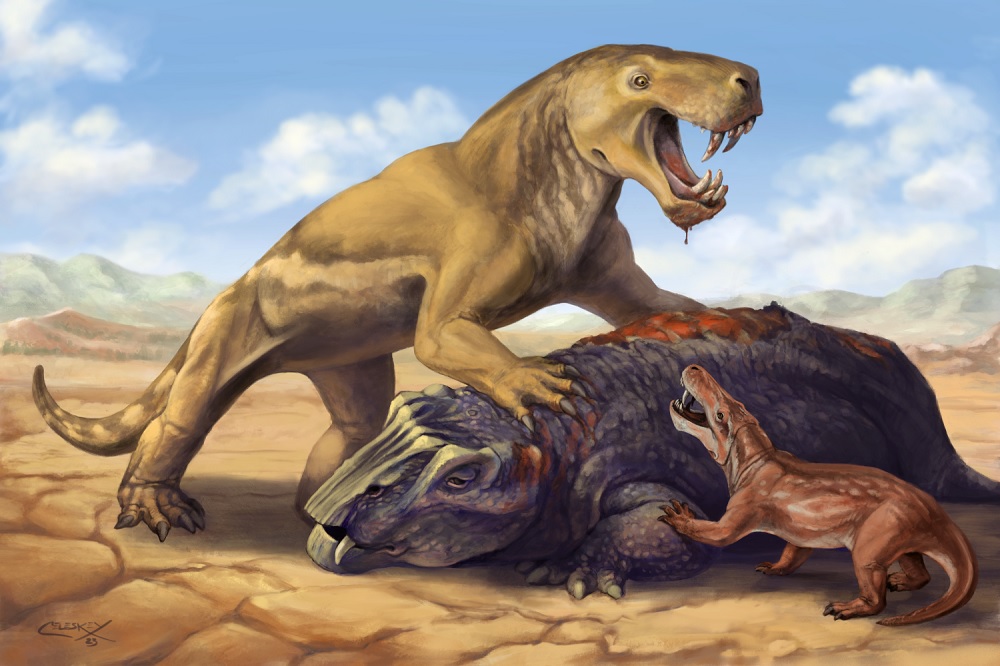The Proto-Mammal That Stalked a Dying World
Posted on Categories Discover Magazine

About 250 million years ago, widespread volcanic eruptions changed the earth’s atmosphere and thus its climate, setting off “The Great Dying,” otherwise known as the Permian extinction. Some nine out of 10 species disappeared over the course of about a million years, during which herbivores and predators alike jockeyed for resources, including the formidable inostrancevia.
A saber-toothed meat-eater that likely had tough skin like a rhino and ran on all fours, the inostrancevia was the largest gorgonopsian, a group of proto-mammals that served as top predators in the years before the dinosaurs. Scientists thought inostrancevia had only lived in modern-day Russia, but the discovery of new fossils in South Africa means it must have migrated 7,000 miles across the supercontinent Pangaea to reach a new home.
The researchers aren’t sure why inostrancevia traveled so far from its original habitat, or how long the migration took.
“The fossils themselves were quite unexpected,” says co-author Pia Viglietti, a research scientist at the Field Museum in Chicago, in a press release.
Where Did the Saber-Tooth Animal Go?
When inostrancevia arrived in South Africa’s Karoo Basin, it would have encountered few competitors as most had already gone extinct, long before most other species, the study found. Predators there had served as canaries in the coal mine, the researchers say, and after leaving a fossil record, inostrancevia died out, too.
Read More: The Permian Extinction: Life on Earth Nearly Disappeared During the ‘Great Dying’
Overall, the top predator role in the basin changed four times in less than 2 million years around the Permian extinction, “which is unprecedented in the history of life on land,” says co-author Christian Kammerer, a research curator of paleontology at the North Carolina Museum of Natural Sciences, in a press release.
“This shows that the South African Karoo Basin continues to produce critical data for understanding the most catastrophic mass extinction in Earth’s history,” says co-author Jennifer Botha, a professor at the Evolutionary Studies Institute, in a press release.
Predators Face Extinction
The Basin also sheds light on how predators go extinct in the modern world, where natural ranges often shrink due to human encroachment.
“Think about wolves in Europe or tigers in Asia, species which tend to be slow to reproduce and grow and require large geographic areas to roam and hunt prey,” says Kammerer. “Apex predators in modern environments tend to […] be among the first species that are locally extirpated.”
No one knows for sure whether gorgonopsians had fur or reptile-like skin, though they are believed to have hunted reptiles, especially pareiasaurs, the largest lizards that lived during the Permian. Inostrancevia also ate dicynodonts, smaller, pig-like relatives of theirs in the gorgonopsia clade.
Scientists have classified the four-legged predators as therapsids, along with the creatures that evolved into modern-day mammals. But inostrancevia most likely reproduced by laying eggs.